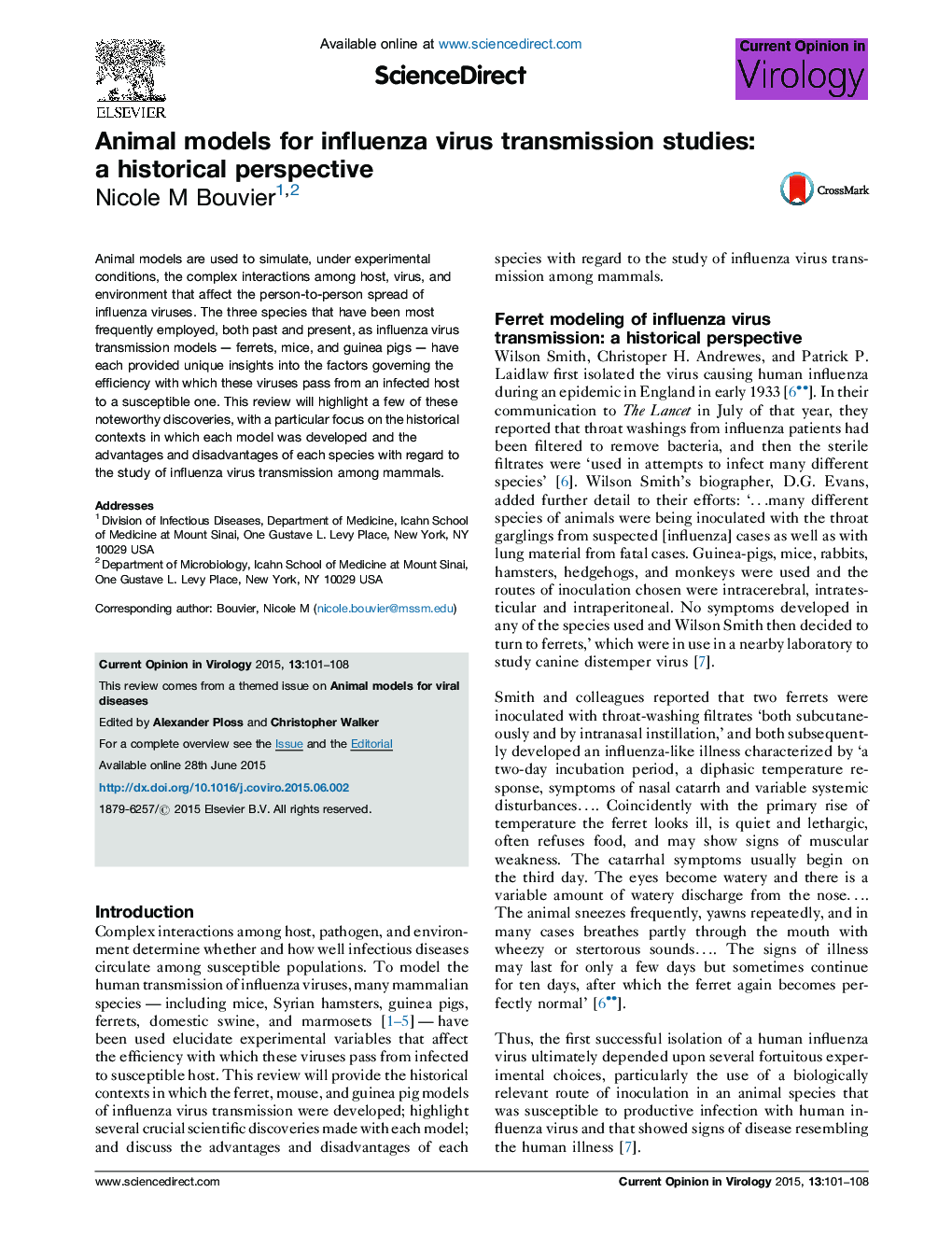| کد مقاله | کد نشریه | سال انتشار | مقاله انگلیسی | نسخه تمام متن |
|---|---|---|---|---|
| 2473271 | 1555913 | 2015 | 8 صفحه PDF | دانلود رایگان |
• Experimental animals are used to model influenza virus transmission among humans.
• Ferrets, mice, and guinea pigs have provided valuable insights into influenza transmissibility.
• Influenza transmission models have unique advantages and disadvantages.
Animal models are used to simulate, under experimental conditions, the complex interactions among host, virus, and environment that affect the person-to-person spread of influenza viruses. The three species that have been most frequently employed, both past and present, as influenza virus transmission models — ferrets, mice, and guinea pigs — have each provided unique insights into the factors governing the efficiency with which these viruses pass from an infected host to a susceptible one. This review will highlight a few of these noteworthy discoveries, with a particular focus on the historical contexts in which each model was developed and the advantages and disadvantages of each species with regard to the study of influenza virus transmission among mammals.
Journal: Current Opinion in Virology - Volume 13, August 2015, Pages 101–108
